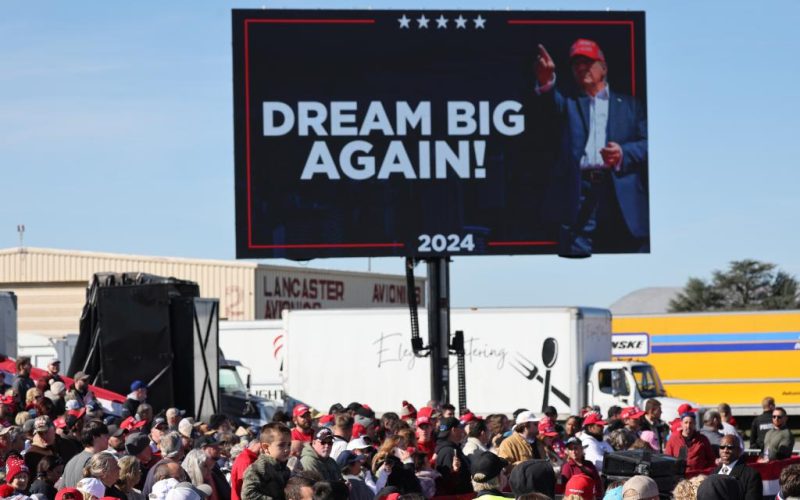Most Americans view election surveys with both anticipation and skepticism.
The sheer number and the potential for defective or biased polling make poll watching a challenging and time-consuming endeavor.
If only there were a place we could go and see all the polls and an unbiased average indicating trends.
Turns out there is.
I visit RealClearPolitics every morning to find articles on both sides of the pertinent issues of the day.
When the website began publishing and updating a thorough list of election surveys — and their unweighted average — I considered it the answer to a political junkie’s prayers.
I clearly wasn’t alone: RCP’s polling averages became widely accepted across the media landscape.
But there was a problem. Establishment polling elites objected to RCP’s unfiltered results.
Consider this New York Times piece published five days before the presidential election: “Why the Right Thinks Trump Is Running Away With the Race.” The right thought that, of course, because he was. But despite the political winds, the Times staff were unable to fathom that possibility.
Donald Trump cruising to victory, the paper said, was a misperception: “Skewed polls and anonymous betting markets are building up Republicans’ expectations.”
The Times saw this as something of a conspiracy designed to create “a narrative of unstoppable momentum” for Trump “that could undermine faith in the entire [electoral] system.”
To save our democracy — and perhaps encourage its progressive readership — the Times asserted skewed polls weren’t “having a significant impact on the polling averages calculated by news organizations, including the New York Times,” because they “do not treat all polls equally.”
Rather, in their great wisdom, legacy news organizations “adjust their models to give less weight” to surveys they decide are biased — or simply ignore them.
The Times seriously thought people would see this as a plus.
The paper then criticized RCP because “unlike its competitors” it treats “all polls equally” and includes surveys “other aggregators reject.”
Another objection: RCP just reports the results and “does not weigh its averages.”
The Times sees this as a negative. Really.
Of course, the paper’s point is excluding or underweighting polls it considers — in its august opinion — faulty presents a more accurate read on voter sentiment and election results.
So let’s compare how the Times’ and RCP’s averages held up once the ballots were counted.
President-elect Trump won the popular vote by about 1.7 percentage points (49.9% to 48.2%).
The Times’ final polling average missed that result by 2.7 points, showing Vice President Kamala Harris ahead by 1 point (49% to 48%). The final RCP average was off by 1.8 points, showing Harris up by 0.1 (48.6% to 48.7%).
Thus RCP’s unweighted average of all the polls was about 33% more accurate than the Times’ weighted average of select polls. Well, who would have thought it?
Not surprisingly, the Times average was less accurate in part because it underweighted or excluded polls it didn’t like — which had Trump ahead.
It underweighted a TIPP poll that had Trump winning the popular vote by 1 point. It excluded a Rasmussen poll that had Trump up 3 points — so off by 1.3 points to the positive for Trump but still a little over 50% closer to the actual results than the Times average. RCP included both polls without weighting.
The Times also slammed RCP for its “no tossups” Electoral College map showing potential election results assuming the RCP average for each state.
To its horror, the Times found this map showed “Trump winning every swing state” but two. In the end, of course, he won every one.
Finally, the Times chided Republicans for pointing out the betting odds were increasingly favoring Trump. Those odds are considered an indicator of voter sentiment because they reflect people putting money behind a candidate, rather than simply fielding questions in a telephone call or online. RCP offers readers a list of the odds for each betting site and averages those odds.
The Times’ concern was an unidentified Frenchman was skewing the odds with large bets causing “a spike in Mr. Trump’s favor over the past month” — which did “not track with the overall state of the race as captured by reputable polling firms.” That, at least, was an accurate statement. It did, however, track with the ultimate result.
Fortunately for that Frenchman, he didn’t rely on the Times or its so called “reputable polling firms.” He “made a successful bet on Donald Trump winning the presidency” and “earned about $85 million in profits,” the Wall Street Journal reports.
Bottom line: The RCP polling average was less biased and more accurate than the Times’ average, RCP’s “no tossups” map showing Trump taking almost every swing state was close to accurate, and the betting odds went with the winning candidate. The Times’ criticisms were inaccurate and self-serving, resulting, I believe, from an inability to see outside the left’s progressive bubble.
The Times polling average results brings to mind a misquotation attributed to New Yorker film critic Pauline Kael more than 50 years ago: “I can’t believe Nixon won. I don’t know anyone who voted for him.” One wonders if anyone on the Times staff knows someone who voted for Trump.
In any event, I know where I’m looking for polling data next cycle, and it’s certainly not the Times.
Andy Puzder, a distinguished fellow at the Heritage Foundation, served for 16 years as CEO of CKE Restaurants.
Twitter: @AndyPuzder








